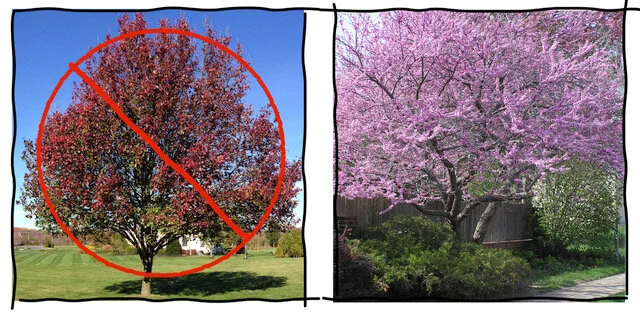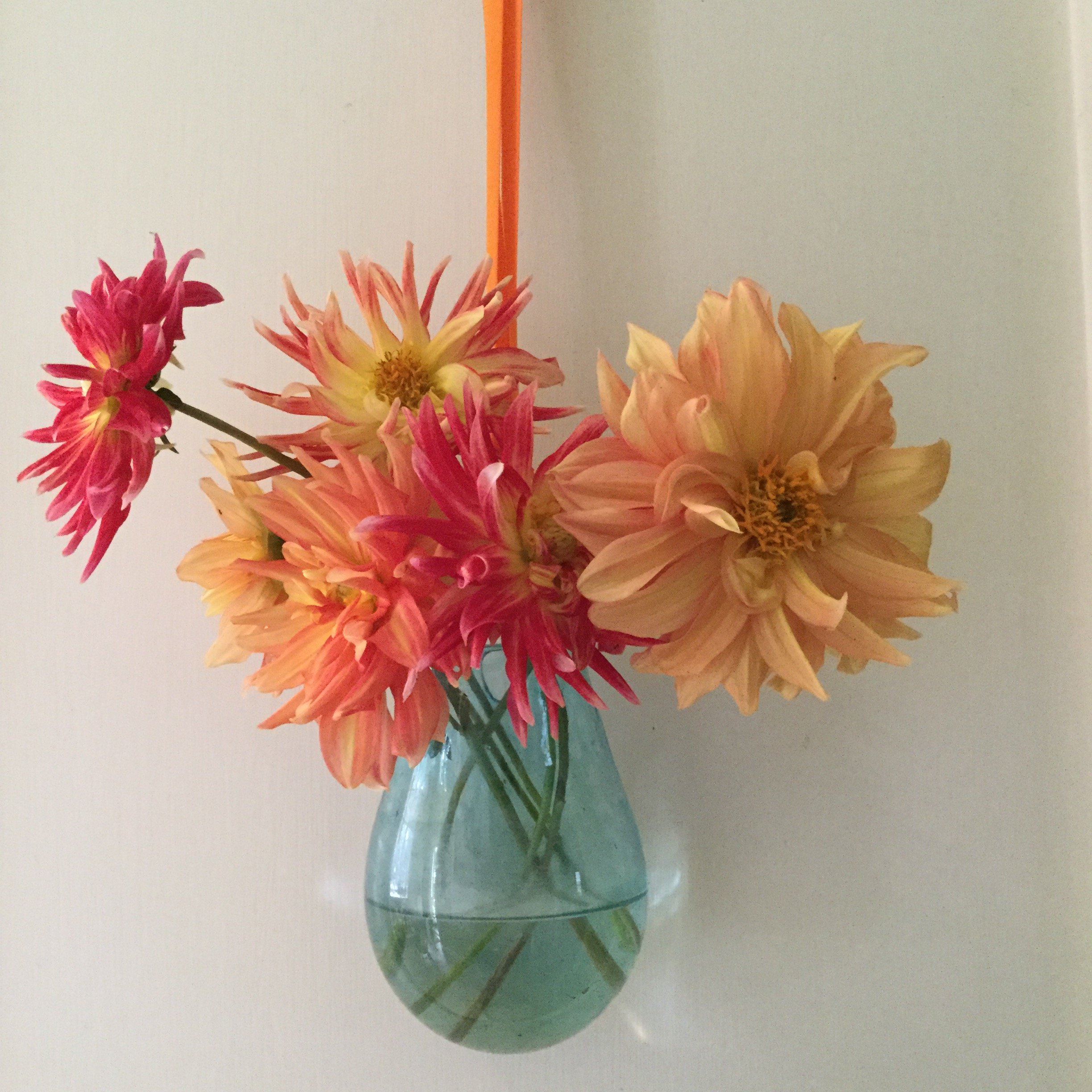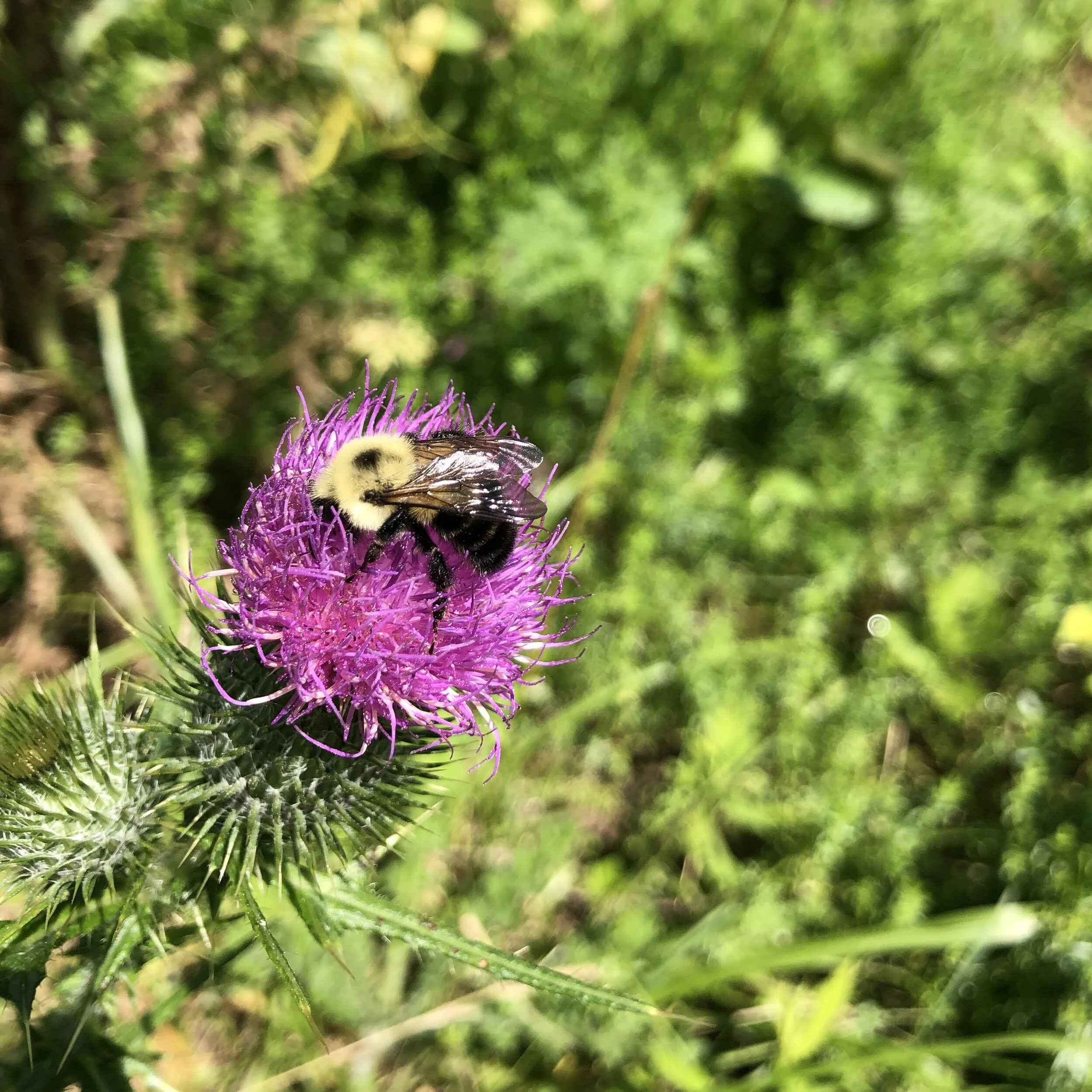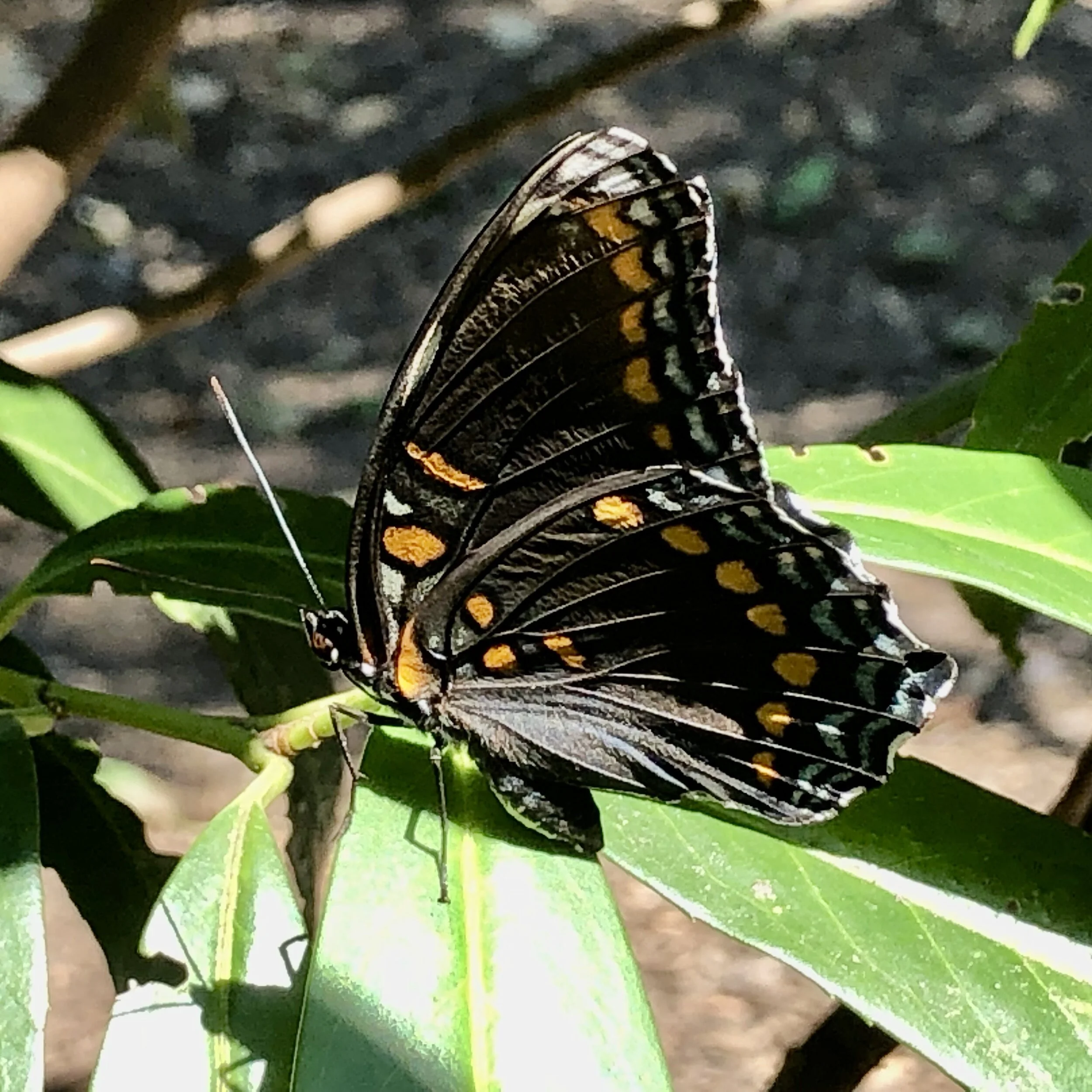I walk my dog in the woods near our home every morning. I love seeing ‘my’ Belted Kingfisher dive for breakfast in the summer and funny looking Buffleheads too. And several times a year I’m privileged to see a Bald Eagle, gliding past me over the lake. Seeing nature like this is hopeful, but I am at the same time alarmed to see the degradation of the woods on the other side of the trail.
Twenty years ago it was a diverse forest. So full you could not see into it. So many species of trees; birch, beach, oak, ash and tulip trees. The understory was also full with viburnum, chokeberry, witch hazel and azaleas. Today most of the native understory has been eaten by an out of control deer population, and in its place has grown what we call exotic invasive’s.
What To Plant Instead Of Exotic Invasives
Exotic Invasives
Japanese Barberry, Japanese Knotweed and Burning Bush, from Asia. Believe it or not, these were all brought here intentionally as ornamental plants for use in our gardens, back in the 1800’s. Even then, while they might have escaped into our woods, they did not thrive or survive. There was too much competition from our native plants. What happened? Deer.
Deer & The Importance Of Planting Native Species
People assume we caused the deer problem by developing the woods where they lived, thus reducing their habitats and forcing them into suburbia. The truth is, all that development has been great for the deer. They thrive on it. They live on the edges of the forests, and by carving out the forests to build homes, we have created many more ‘edges’. Then we landscaped our yards with their favorite foods. Some areas in New Jersey have as many as 100 deer per square mile, while scientists tell us ten per square mile is all the woods can sustain.
Deer prefer native plants over exotic ones because they co-evolved together over thousands of years, it’s what they are used to. When we had a normal deer population, the native plants were never decimated. Now, with huge populations of deer, most of the native plants are gone, leaving open areas for the exotics to exploit.
Some of our forests have passed the tipping point. There are no new trees growing to replace all the old ones that are aging out or we’ve lost in recent storms. They get eaten by deer before they are tall enough to survive. The native plant communities have been destroyed, and with their disappearance, the rest of the ecosystem is changing too. The insect populations that depend on the native shrubs disappear. The birds and rodents that survived on these insects move on. The hope is that these creatures will adapt to the new ‘normal’ but the data is not good.
Other Problems With Exotic Invasives
Two of the worst exotic invasive are Japanese Barberry and Burning Bush. Exotic, because they come from a far away country. Invasive because they spread rapidly. They have berries that birds eat in the fall. The seeds get pooped out as the birds are flying, and they germinate everywhere.
As destructive as these plants are, they are still staples in our nurseries. They have been banned from sale in most Northeast states but not NJ. They have been talking about it for years but have not made a move yet. Why? The nursery trade likes to give us what we ask for, instead of educating us on the detrimental effects of these plants.
Nurseries sell Japanese barberry because it has great red color and the deer don’t eat it, we love burning bush for its brilliant fall color, you see it in mass in corporate parking lots.
What To Plant Instead of Exotic Invasives: The Native Alternatives
Below are some worst offenders and my favorite native alternatives. These will also become habitat and food for important pollinators, small mammals and birds. And it would be worthless if they were not also on my deer ‘resistant’ list.
What To Plant Instead of Exotic Invasives :
Replace Barberry with Virginia Sweetspire, 3’ high great color, and flowers.
Replace Spirea with Ninebark. There are so many different ones, you can pick the best for the size and color you want.
Replace Norway Maple with White Oak. This is the number one best tree to support wildlife.
Replace Callery Pear with Redbud. Early spring flowers and beautiful shape.
Replace Butterfly Bush with New Jersey Tea. Least deer resistant on my list, so use accordingly. Worth trying for its summer-blooming flowers. Dry site tolerant.
Replace Burning Bush with Chokeberry or Fragrant Sumac. Great fall color, one tall one small.
Replace Miscanthus Grass with Switch Grass. So many varieties to choose from.
Replace Privet with an Arrowwood Viburnum or American Holly hedge.
Replace Forsythia with Spicebush, and look for Spicebush Swallowtails in your garden
It is simple, you would not ingest a dangerous substance, or feed it to your family. Don’t plant anything on your States Exotic Invasive Plant List.
I hope you have found this post useful and found some great native alternatives to plant instead of exotic invasives.
Learn more about me Carolle Huber my sustainable landscape blog and the inspiring sustainable landscapes that I design here.
Carolle



















